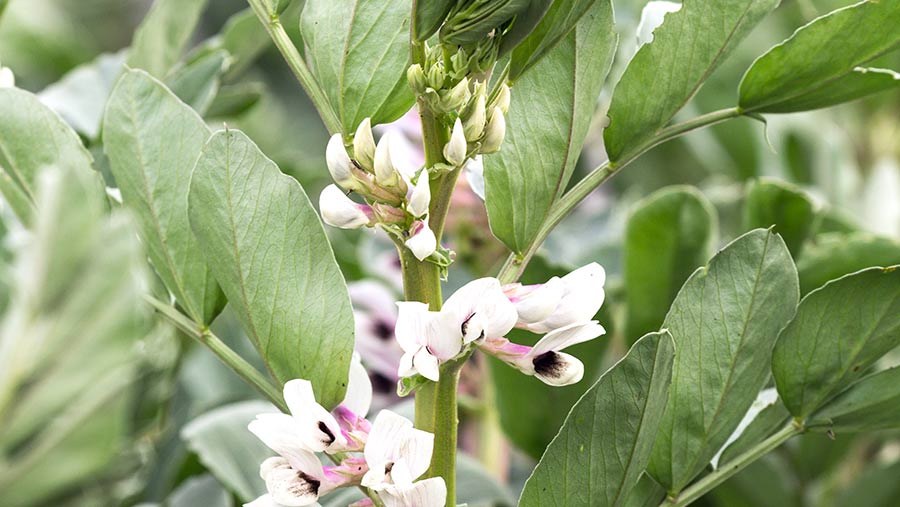How winter bean grower in Yorkshire achieved top yields
 © Tim Scrivener
© Tim Scrivener A perfect bean-growing year produced a record yield for one East Yorkshire grower and a good enough sample for human consumption to win a prestigious quality award.
Robin Smyth grew a autumn-sown crop of the variety Tundra that yielded nearly 7t/ha, enough to win the British Edible Pulse Association’s Wherry & Sons winter bean cup for quality.
Mr Smyth farms just over 700ha of largely fertile heavy clay soils just to the east of the Yorkshire Wolds, which is well suited to beans and has a 10-year winter bean yield average of 5t/ha.
Winter beans are favoured over a spring-sown crop at his Sunderlandwick Farms, just south-west of Driffield, as they can be harvested earlier than the spring crop during late August and early September.
“Our heavy land needs a good spring and we had a kind spring with dry weather in May and early June, while the rain came in the middle of June to help the beans,” he tells Farmers Weekly.
See also: Suffolk grower drops sugar beet and ups winter bean area
Early harvest
Tundra has given good yields and offers reasonable disease resistance, as well as a relatively early harvest, he adds.
The winter beans were established by broadcasting them using a 24m Amazon spreader, ploughed in to a depth of 100-150mm, and the surface power harrowed to a level finish.
Seed rates for a C1 seed crop grown on a contract were 164kg/ha, whereas a slightly higher rate of180kg/ha was used for the C2 crop.
The C2 seed rate was calculated from a 250-bean weight of 176g in 2016 and equated to 25 beans/sq m. The C1 crop was sown between 17 and 20 October. This resulted in achieving the target plant population of 17 plants/sq m.
Pre-emergence weed control of propyzamide and pendimethalin was applied on 27 October, and some weedier headlands were later sprayed with carbetamide on 10 February.

Robyn Smith
Disease control
The crops showed signs of chocolate spot and downy mildew before the first fungicide application on 7 May at first flower emergence. There were also signs of pea and bean weevil damage.
Consequently, the crop was treated with cyproconazole and chlorothalonil (Alto Elite) and tebuconazole with an addition of lambda cyhalothrin to control the weevil.
With 40 or so beehives on the farm, the spraying took place early in the morning to avoid harming the bees.
A second spray of the same mix, but with the addition of pirimicarb to control the bean aphid, followed at mid- to late flowering on 24 May – again early in the morning.
The bean crop received 60kg/ha of phosphate and potash as a maintenance fertiliser dressing.
In most years the crop requires desiccation using diquat (Reglone). However, as the crop had blackened sufficiently, moisture levels were lower than 17% and there was good weed control, the crop needed no dessication.
Top yields
The beans were harvested between 30 August and 3 September at moisture levels ranging from 16.3% to 16.9%. Harvested yields adjusted down to 15% moisture were 6.67t/ha for the C1 crop across 32ha, and 6.16t/ha for the C2 crop across 39.8ha.
Overall yields for the 2017 harvest were 6.39 t/ha across 72ha of winter beans, and the gross margin was £969.63/ha.
The slightly reduced yield for the C2 crop was due to some lodging because of excessive growth on one smaller patch. The highest individual yield (adjusted to 15% moisture) achieved on one 21.65ha parcel was 6.92 t/ha. The yields set a farm record, exceeding the previous 2008 record yield of 6.12t/ha.
Crop consultant Dale Senior gave agronomy advice for the crop, and the farm team of Ian Berriman, Pete Hall and James Hinde provided the cultivation, spray and harvesting expertise.

